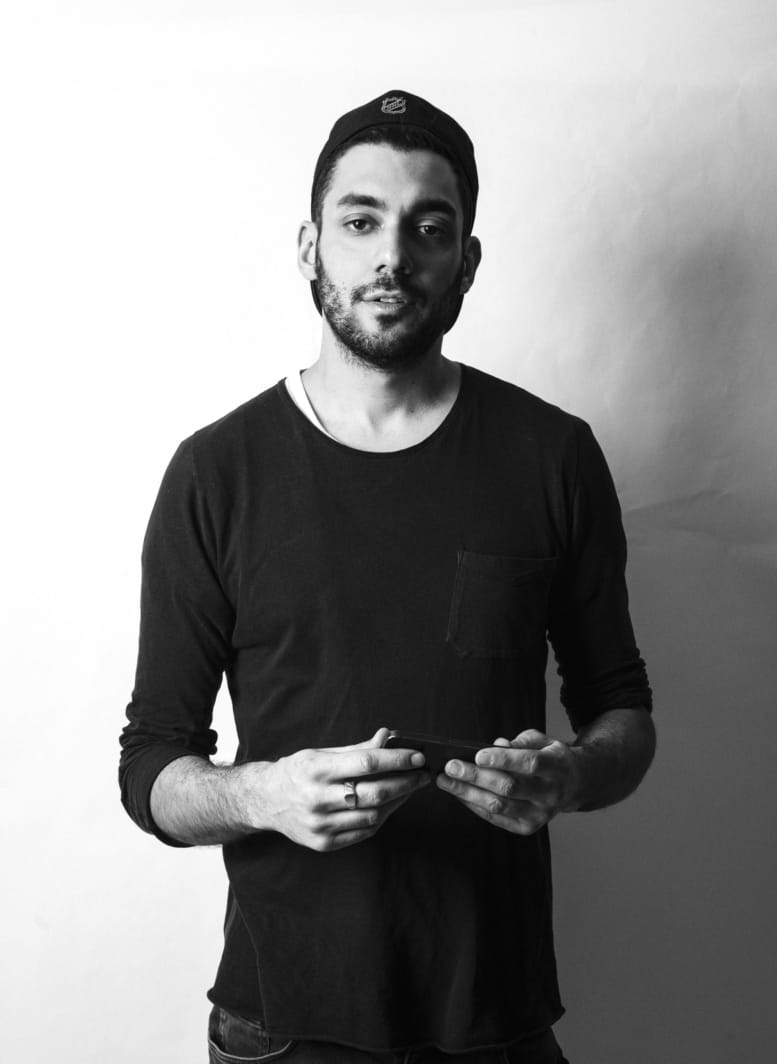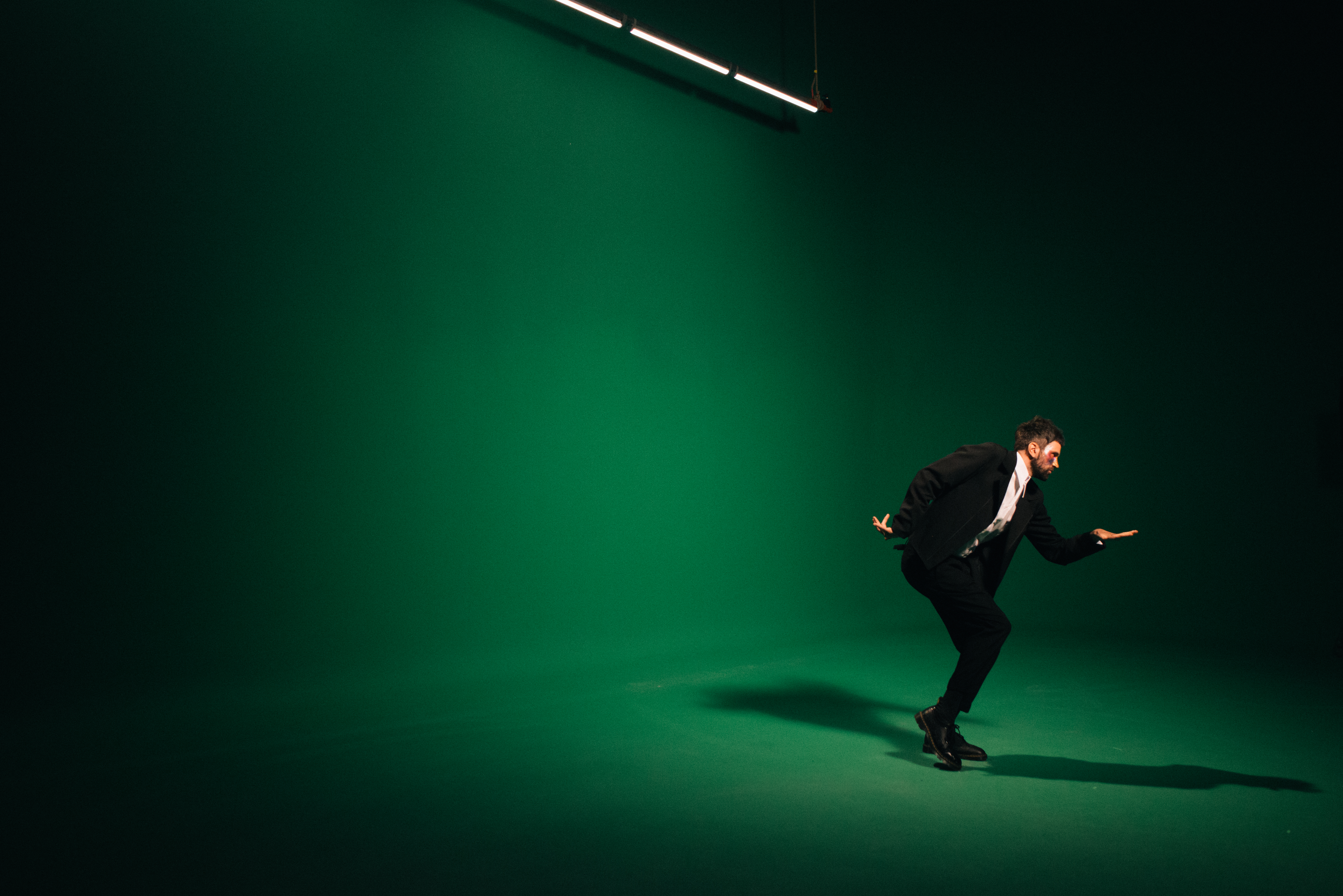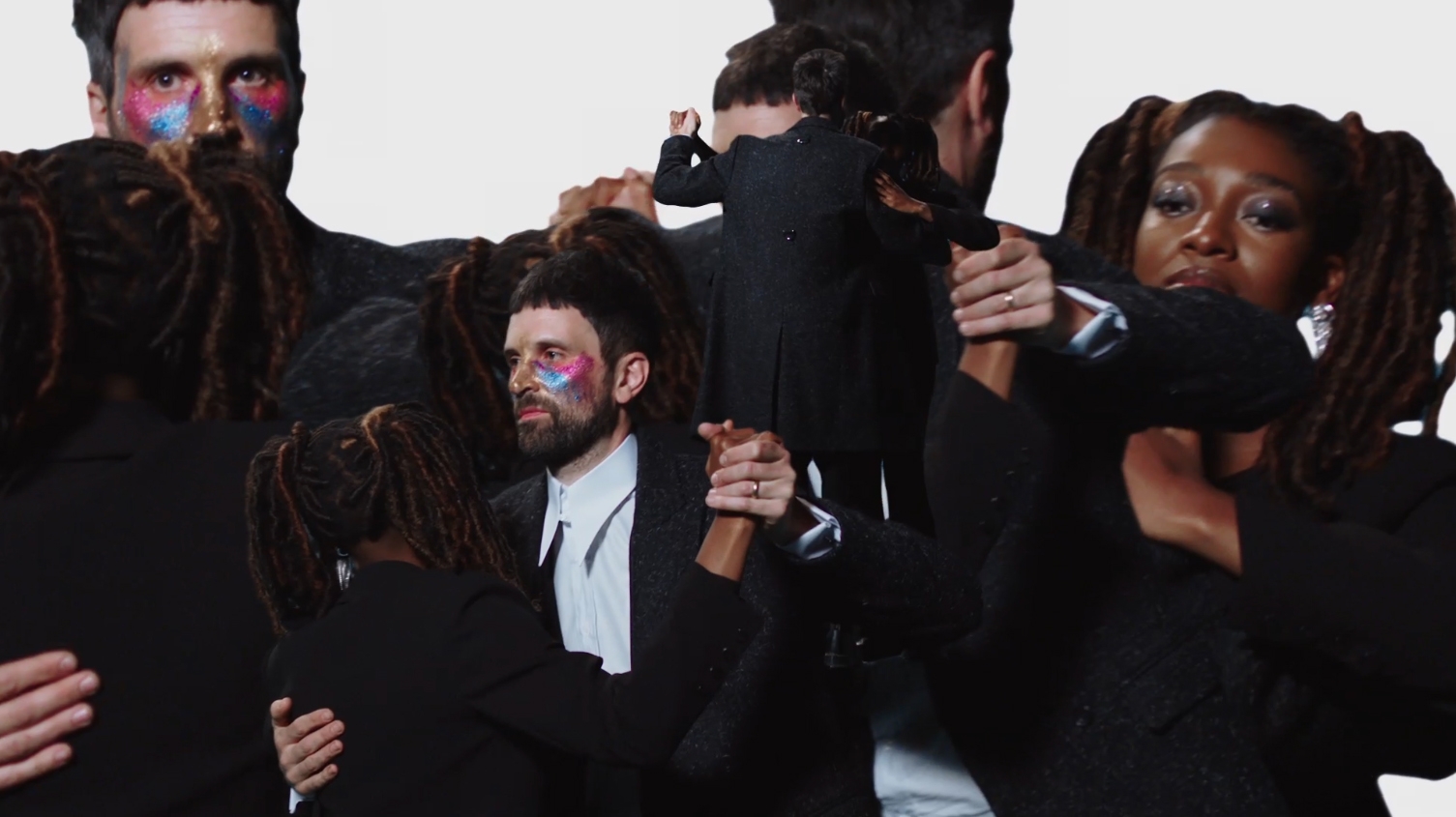Aitor Throup discusses modern portraiture, analogue identity and his speed-warping production for The S.L.P’s new music video ‘Favourites’

When Aitor Throup’s mother, a doctor from Buenos Aires, took him and his sister to one of her University’s medical lectures, one might not assume the formative impact this would have on his career as an artist, fashion designer and creative director.
The British artist is propelled by an intrigue in human anatomy and the body in motion, unravelling the anatomical processes in almost everything — developing new ideas of modern portraiture and exploring an antagonism between nature and the digital.
His fashion design spans collections for G-Star Raw, C.P. Company and he has showcased selected work from a 2 season collaboration with Stone Island, ‘Modular Anatomy’ and ‘Articulated Anatomy’, at the V&A. Throup’s costume design ranges from high-grossing production ‘The Hunger Games’ to Wayne McGregor’s ‘Autobiography’, a dancework exploring memory. In 2014, he created a ‘death veil’ mask for Flying Lotus’s tour, a CGI constructed portrait of Damon Albarn and directed the film ‘A Portrait of Noomi Rapace’. Creative director to rock band Kasabian and Damon Albarn, Aitor Throup’s artistic medium is in constant flux.
“I consider myself a storyteller” he tells us. And indeed, working within the limitations and challenges of every story, he has an aptitude for deconstructing and reconstructing identity across artwork, filmography and fashion design.
And now, in his production for The S.L.P.’s new music video ‘Favourites’, Throup explores new speed-warping technology as a compelling but discomforting accompaniment to the glitchy sounds of Sergio Lorenzo Pizzorno’s first single. Examining social identity in the age of online dating, Pizzorno’s track featuring Little Simz, provides a platform from which Throup engages with our digital anatomy and DNA, employing laborious pre and post-production methods to form a modern portrait of the artist. The debut album, for which Throup completed the entire art direction, unravels the identity of an established artist, known for his role as guitarist and song-writer for Kasabian (currently between albums), and reforms Sergio Lorenzo Pizzorno in a new light.
Port spoke to Aitor Throup about this speed-ramping process, perceived identity in the digital age and the artist’s anatomical gaze.

What was the initial inspiration for the video? Is there any particular source of filmography / filmmaker you take inspiration from?
I felt that this video was the perfect platform to try the technique for the first time, as that in itself reflects the newness of Sergio’s solo project. I wanted to project this element of risk all around the project. The idea for the video itself though, as most times I work directly with artists, was for it to be a sort of portrait of the artist. I’m very interested in the concept of portraiture, and I have explored it through unconventional pieces before. I made a mask for Flying Lotus, a forensically reconstructed digital skull for Damon Albarn, and a sculpting process film (and sculpture) for Noomi Rapace. For Sergio, the portrait spans from the artwork and, of course, the video of the ‘Favourites’ single, through to the press shots, and eventually the whole album artwork and campaign. I wanted to bring to life this transformation, this transition, not only from ‘Kasabian Serge’ but also from ‘Sergio’ himself.
It was important that he became this character which was ultimately an exaggerated, almost cartoonish version of himself. The dream state superhero version of himself. I even suggested to him that he doesn’t call himself by his full name — but rather, a distilled version of himself, whilst retaining authenticity. I’ve always liked how rappers have a poetic ability to give themselves this dual persona through a simply crafted moniker. I suggested ‘The S.L.P.’ and honestly, it’s my favourite part of my whole creative contribution to the project. It’s like the perfect rebranding. The face paint and glitter I see as his superhero mask. It’s an expression of him just going for it, expressing himself, and challenging the conventions or expectations of what he should look or sound like. It’s a metaphor for having fun and taking risks with his music, but still being mature and sophisticated. The more we grow up, the more we should remember to think like children — to be free.
From what I can understand about the process, it involves reconstructing the original soundtrack for Sergio to be able to lip sync to and then reassembling it all post-production. Can you expand a little on this process? Was it difficult to do? How long did it take you?
The best way to describe it is that you take the audio track and you decide which parts are going to be sped up by 33%, and which moments are going to be slowed down by approximately 800%. The sped up parts of the track mean that if it’s performed at that speed and captured at 33 frames per second, it will play back (at 25 fps) at the normal tempo of the song — yet the performer’s movements will seem slightly unnaturally slow. When the performer gets to the super slowed down moments, he then slows his performance to match the track, which after a few seconds return to the faster speed.
In the edit though, all of this madness begins to make sense, and the reconstruction process begins. It’s a very laborious process of matching key lip-sync frames, then figuring out the exact sections which are super sped up (speed-ramped) in order to reconnect the visual to the audio track. This speed ramping process needs to be done manually though, through ‘frame cutting’ in order to curate the motion transitions. Speeding through footage is basically cutting frames out — but we chose to select exactly which individual frames we were cutting to have more control over the flow of action. It was like crafting the piece by hand — very, very laborious. I would say that the whole process took approximately 1 month in terms of execution, but timeless hours, days, weeks before that.

The track itself is concerned with the effects of our digital age, the construction of identity and the ephemeral nature of social media. Can you elaborate a little on why this track, in particular, was chosen to be treated with this speed-warping technique?
I wanted to challenge the viewer’s perceptions and even expectations. I wanted to create something that looks very real and raw — analogue I guess — that eventually contributes to a clashing identity based on digital repetition and manipulation. Sergio was always talking about a tinder date gone wrong. This really got me thinking about identity in the digital age and the concept of identity in general, as it seems a perfect conceptual framework for launching the solo career of an established artist. The speed-warping technique in the context of this song really lends itself to help the viewer question whether what they’re seeing is ‘real’ or not — maybe it’s a quiet way to even suggest that we question even reality itself every now and again.
You have talked about the production process as “replicating nature through art”. How so?
I believe that nature is almost like a book of recipes. There’s a recipe for a tree, or a mountain, or a cat, or a human being — but there are all these variables in the creation process that mean that every single time a new one is made it’s a completely unique example of the original ‘archetype’. I believe in creating the recipe, and in gathering the best ingredients. In my work I’m often designing concepts and processes, rather than the final outcome. This means that the result has an innate sense of authenticity. At a subconscious level you sense that what you are seeing is, in part, the result of a layered process — that at some point the artist relinquished control, in order for the result to be as organic as possible.
The effect produced is a subtle discomfort — we’re not quite sure what is ‘wrong’ or different and time seems to move both fast and slow. Glitching is an almost human aspect of the digital world — a malfunction that cannot be explained. What did you want Sergio Pizzorno’s listeners and viewers to take away from such glitchy and time-warping visuals?
When I work on a music video I suppose I’m creating a portrait of the song itself (as well as of the artist in most cases). When I first heard the track I loved it because it challenges the conventional structure of a pop song. When I started dissecting the structure for the purpose of the video it became even more confusing. So I suppose that my intention with the aesthetic and visual tempo of the video was for the viewer to feel the song even more, to bring out sonic elements visually throughout. I had always talked to Sergio throughout the process of him being in the studio about this being a character version of himself — not him as a person. So I wanted this video to convey Sergio inside his own head, in his own world. It’s supposed to feel like it’s not in the real world. That’s why the speed-warping process lends itself well to this piece — it feels like slightly different laws of physics apply in this dream state.
Your previous work is concerned with the body and you have talked about “creating anatomically”. I understand you were born to a family of doctors — is this what sparked your interest in human anatomy? Do you think this plays a part in the music video with Sergio?
When I was growing up in Buenos Aires until I was seven years old my mother was training to become a doctor. I have very vivid memories of her taking my sister and I to big medical lectures at University. I remember all these incredible medical books all around the house. I would dare myself to flick through the pages to look through all the intense imagery. I guess that I somehow was desensitised to that kind of imagery, and I started to build a curiosity towards the human body and anatomy in general. I wasn’t the kid who was deconstructing and reconstructing toys — instead I was looking through medical books which deconstructed the human body. I have always drawn, it has been the one constant in my life, and I suppose that my drawings became the platform for me to apply this anatomical information. I became obsessed with depicting the body in motion, and developing characters. Years later, growing up in England as a teenager, I began to get interested in clothes, and my drawn characters became more and more detailed. Unbeknown to me, at the time I was designing garments directly based on the human anatomy in motion. It took me 5 years of studies to make sense of this.
Ultimately, when I create anything I do so anatomically. Not just in the literal sense of thinking of the human body first, but actually I aim to create things that possess their own anatomy. A basic anatomy for creation is to start with a reason, then for this to inform a process, which eventually results in a final product (outcome). Just like with the anatomy of a body, the outer visible layer looks and behaves the way it does because of a complex system of reasons underneath and before it. So in that sense of course the video for ‘Favourites’ is an anatomical video piece.
The S.L.P’s debut album launches August 30th 2019